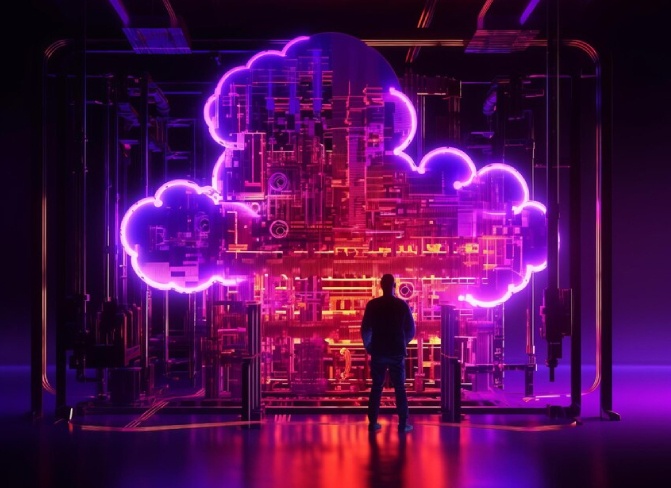Cloud Computing vs Traditional IT Infrastructure: Choosing the Right Fit for Your Business
As companies nowadays completely depend on technology, choosing between cloud computing and traditional IT systems is an important decision. Each option has its advantages and challenges, and the best choice depends on factors like cost, scalability, security, and the level of control a business wants over its systems.
Let’s have a look at the differences between cloud computing and traditional IT infrastructure to understand how each model works and make an informed decision.
What Is Traditional IT Infrastructure?
A traditional IT infrastructure consists of the physical hardware and software that a business owns and maintains. This can include servers, storage devices, and networking equipment, all of which are typically housed in a company’s data centre or server room. The business is responsible for maintaining the equipment, ensuring it runs properly, and keeping the entire system secure.

What Is Cloud Computing?
Cloud computing enables businesses to rent computing resources like storage, processing power, and software from third-party providers over the Internet. These resources are hosted remotely, so businesses don’t need to own these types of physical hardware. They can access the resources whenever necessary and only pay for what they use.
Key Differences Between Cloud Computing and Traditional IT Infrastructure
Traditional IT infrastructure involves owning physical hardware, whilst cloud computing provides a flexible, internet-based service model. Deciding between traditional IT infrastructure and cloud computing is a key strategic choice that affects your operations. Let’s explore the main differences between these two approaches:
Cost
One of the main differences is cost. Traditional systems require large upfront hardware and software investments. On the other hand, cloud services usually operate on a pay-as-you-go model, so businesses only pay for the resources they use. This can result in different financial outcomes based on the size and growth of the organisation.
Scalability
Scalability is another important factor when comparing these two approaches. In traditional setups, expanding capacity often means buying new hardware, which can take time and money. However, this approach may offer more control over IT infrastructure and long-term cost efficiency. On the other hand, cloud services allow businesses to quickly adjust resources without large investments in physical equipment. This flexibility can help companies that experience rapid growth, though it may also come with ongoing usage costs.
Accessibility
Cloud computing typically focus more on accessibility than do traditional systems. With cloud-based solutions, employees can access applications and data from anywhere with an internet connection. In contrast, traditional infrastructure focus more on control and security, but with a lesser priority on mobility and flexibility. Cloud platforms can sometimes lock you in to their ecosystem and present difficulty migrating your data and applications to other platforms.
Maintenance
Traditional IT systems require regular maintenance by skilled IT staff to handle hardware management, software updates, repairs, and upgrades. This approach ensures direct control, but can strain internal resources. Cloud providers usually maintain their “underlying” infrastructure, however they don’t maintain absolute control over security, data location, or compliance, and may be susceptible to downtime and potential data loss.
Security
Traditional IT infrastructure gives businesses complete control over their systems, but also full responsibility for security. This suits organisations with strict data requirements and compliance. Cloud providers, however, implement security protocols to protect client data, though dependence on third-party infrastructure and internet access can pose its own risks. It’s essential to evaluate your specific security needs when choosing between the two.
Final Thoughts: Which Option is Right for Your Business?
Choosing between cloud computing and traditional IT infrastructure ultimately depends on an organisation’s unique needs, budget constraints, and long-term goals. Here are some the major factors affecting a business’s decision:
Considerations for Traditional IT Infrastructure
- Control: If your business requires complete control over data and security protocols, traditional infrastructure may be preferable.
- Compliance Requirements: Some industries have strict regulations that necessitate keeping data on-site.
- Existing Investments: If you already have significant investments in hardware and software, it may be cost-effective to continue using them.
Considerations for Cloud Computing
- Scalability Needs: If your business experiences fluctuating demands, cloud solutions offer better scalability. Businesses can easily scale their resources up or down based on demand.
- Cost Constraints: For businesses looking to minimise upfront costs, cloud computing provides a more economical upfront option.
- Remote Work Capability: If your workforce is remote or hybrid, cloud computing allows easy access from anywhere.
If you’re unsure about these decisions, or if your business is served better with a Traditional IT Infrastructure or Cloud Infrastructure or a Hybrid, seek a professional IT Managed Services Organisation to advise you and maintain all or part of the infrastructure for you as they will provide you with the expertise, 24×7 security monitoring, infrastructure management and support that will maximise your ROI.
MSP Corporation, help businesses navigate these decisions with expert guidance and tailored solutions. As a leading IT service provider in Australia and New Zealand, MSP Corporation specialise in all areas of IT and can assist you in optimising your systems to drive growth whilst reducing cost.
Call 1300 554 404 or email sales@mspcorp.com.au to book your free consultation.


 Australia's No.1 Managed Service Provider for Quality, Value and Service
Australia's No.1 Managed Service Provider for Quality, Value and Service
